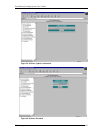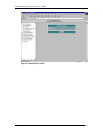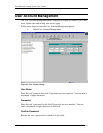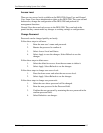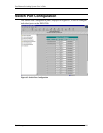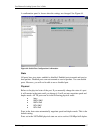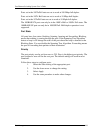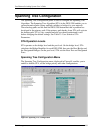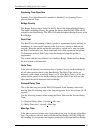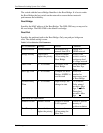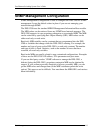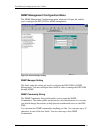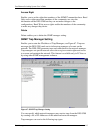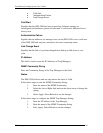
Fast Ethernet Switching System User’s Guide
Web Management
110
Spanning Tree Algorithm
Spanning Tree Algorithm can be enabled or disabled. Use Spanning Tree to
prevent network loops.
Bridge Priority
The Bridge Priority can be from 0 to 65535. Zero is the highest Bridge Priority.
The higher the Bridge Priority the greater the chance that the DES-5200 will be
selected as the Root Bridge. The DES-5200 with the highest Bridge Priority is the
Root Bridge.
Root Cost
The Root Cost is the number of times a packet is regenerated before reaching its
destination. A source sends a packet to the first device (switch or hub) on the
network. When the packet reaches the next hub or switch and is sent out again,
the Path Cost becomes two. Each switch and active hub regenerates the packet.
To determine the Root Path Cost, count the number of times the packet is
regenerated.
The switch with the lowest Path Cost is the Root Bridge. Make the Root Bridge
the best switch on the network.
Hello Time
Is the interval between two transmissions of packets sent by the Root Bridge to
tell all other switches that it is the Root Bridge. The Hello Time can be set
manually, with a range in seconds from 1 to 10. If the Hello Time is set for the
switch and the switch is not the Root Bridge then the Hello Time will not take
effect until the switch becomes the Root Bridge.
Forward Delay Time
This is the time any port on the DES-5200 spends in the listening state while
moving from the listening state to the forwarding state. It can be set from 4 to 30
seconds.
Use the following formula when setting the Hello Time and the Forward Delay
Time:
2 x (Forward Delay minus 1 second) > Max Age
2 x (Hello Time plus 1 second) < Max Age
Max Age Time
Is the time a non-root bridge waits for a packet to be sent. At the end of the Max
Age, if a packet as not been received from the Root Bridge, the DES-5200 will
start sending its own packets and request permission to become the Root Bridge.



